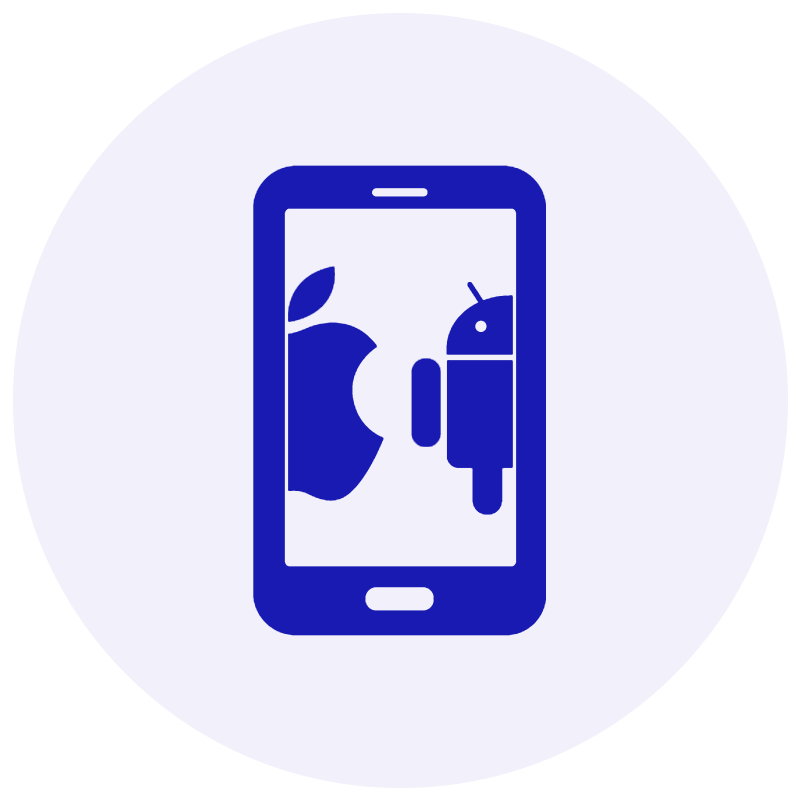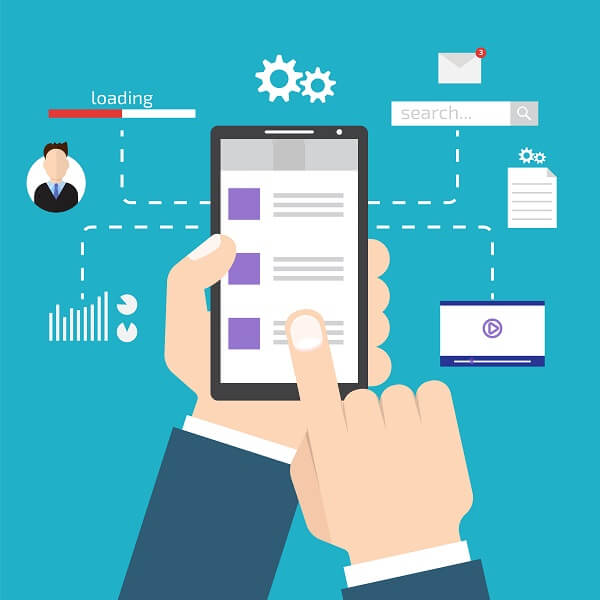
by admin | Jul 10, 2019 | E-Learning Testing, Fixed, Blog |
As the new buzzword in education, E-Learning promises the moon in terms of expanding the scope of modern learning and education. This concept, premised on digital technologies, is designed to demolish distance and offer learners a calibrated method of transmitting all forms of knowledge. High quality e-learning content can literally work wonders by catering to the exacting requirements of various audiences located in different parts of the planet. With this as the premise, ELearning Testing remains critical in enabling such a mammoth mission. We analyze some of the best attributes that distinguish a group of successful e-learning collaborators.
Collaborative Learning Culture
This remains critical to the eventual success of a modern e-learning program. Each member of an e-learning team must bring forth unique ideas and concepts that may spur the enterprise of learning and education. E-Learning App Testing therefore, remains vital to this goal by facilitating a smooth exchange of ideas, providing a platform to share tips and information, and enabling high levels of knowledge retention. This implies that E-Learning must necessarily rest on foundations distinguished by fluid digital technologies, thereby allowing E-Learning ideas to mature and gain wider traction in terms of group learning systems and exercises.
Driving Innovation
The digital domain essentially thrives on the life blood of innovation and disruption. E-Learning, as a child of this domain, thrives on innovation built into every e-learning program or digital learning framework. Therefore, ELearning App Testing becomes critical in terms of generating assurance that learners would be able to access the best information minus any encounters with glitches or bugs that mar software functionality. Testing professionals must bear this in mind because their work, once successfully accomplished, promotes the core ideas that animate the modern concept of e-learning. In line with this, ELearning App Testing must cover every aspect of functionality engineered into an e-learning framework.

Lifelong Learning Mindset
Team members that participate in e-learning programs must inculcate a mindset that promotes continuous learning. This attitude dovetails with the wider e-learning industry that is constantly generating new content and delivering the same over digital platforms. In this scenario, E-Learning Testing assumes criticality by empowering the smooth transmission of knowledge to all stakeholders. Therefore, testers must maintain and refine testing methodologies that promote continuity in learning programs, while upholding the integrity of the underlying code that powers an E-Learning platform. Additionally, team members must volunteer to offer feedback to E-Learning App Testing engineers with a view to improve the quality of content and functionalities that stimulate delivery platforms.
Effective Leadership
The stewards of a modern e-learning program must exert themselves to create effective steering mechanisms that promote the essence of e-learning systems and frameworks. In this context, E-Learning App Testing assumes criticality because such activities play a central role in enabling an invaluable steering mechanism. Team members who undertake ELearning Testing initiatives must acquaint themselves with the content flow and tone, and the possible impact of such content on students and learners. In effect, E-Learning App Testing must rise from the rut of mechanized testing into an activity that rouses the full engagement of the mental faculties and skillsets of testing professionals.
Diverse Strengths
Team persons who undertake E-Learning App Testing must possess and be able to utilize diverse skills and capabilities to their job. Therefore, such a team must comprise competent authors of E-Learning content, instructional designers of repute, graphic designers that know their craft and E-Learning App Testing professionals who implement multiple testing approaches into their work schedules. These attributes can complement each other and create a virtuous cycle that promotes success in e-learning ventures, and additionally such qualities allow E-Learning teams to learn from the combined skillsets, thereby elevating the quality of their input into the construction of a modern E-Learning module.
Project Management
It is vital for E-Learning App Testing professionals to implement effective project management practices. This approach empowers E-Learning Testing engineers to actively enforce conformity to the commercial mandate of delivering functional digital learning systems within a given timeframe. Veteran testers corroborate the fact that such practices galvanise the testing community into delivering high value in terms of E-Learning Testing plans and activities. In addition, effective project management allows testing organizations to elevate the quality of their deliverables in multiple projects, thereby eliciting client delight and big increases in the bottom line of the business organization.

In Conclusion
This outlines some of the attributes that distinguish the actions and mindset of a successful E-Learning App Testing team. The leaders and managers of such teams should strive to gain familiarity with the ultimate objective of e-learning initiatives, since such familiarity can empower them to make sustained contributions to the cause of modern education delivered via digital channels. Further, E-Learning Testing professionals may invest their efforts in exploring alternative mechanisms of delivering e-learning modules via digital platforms. These may include innovative new apps that reside in smartphones and connected tablets, thus allowing users to absorb information at their own pace. We have consistently helped clients attain new standards in this realm – connect with us to know more.

by admin | Jul 22, 2019 | E-Learning Testing, Blog |

by admin | Mar 12, 2019 | E-Learning Testing, Fixed, Blog |
UAT or User Acceptance Testing is also referred to as end-user testing, application testing or beta testing. It is a stage of eLearning development, where the course is verified in real time. In an eLearning project, UAT is mostly in the last phase. It is conducted before the go-live decision is taken. Through eLearning testing, the stakeholder gets the opportunity to verify the course and gain confidence that they have delivered the course that caters to the requirement.
It permits the stakeholder to verify the following points:
- Is the eLearning product simple to navigate?
- Do the navigations, features, and functions of the eLearning course function as designed?
- Does the response in the assessments add value and reinforce the content to my understanding and learning?
- Do video and audio sequences add value and enhance the content as per my understanding and learning?
PlanningPlanning is the most important element in User Acceptance testing process. The planning process helps to outline the User Acceptance testing strategy, explain the main focus areas, entrance, and exit criteria.
Designing Test cases
The test cases are developed to include the entire functional situations of eLearning course in real time usage. The UAT test cases should be developed using simple language. Additionally, it the entire test process should be made easy to understand for the tester.
Finding a team The testing team that performs UAT Test Cases plays an important role in the UAT process. The test execution team consists of real or actual world users signing up for the eLearning courses. An important way of appreciating the testing team is to identify them in several forums.
Test Execution Further, the testing team would perform the developed test cases and would additionally achieve certain relevant random exams.
Recording the Defects The testing team would record and report defects identified during the UAT. These bugs or defects will be drafted as a document with necessary comments, making it easy to further evaluate and eliminate the defects.
Resolving the Bugs The next step is to resolve or fix the bugs identified by the testing team in the eLearning program. The eLearning development members make final alterations to the course to produce a bug free eLearning course.
After resolving the bugs and issues, the QA team would provide approval of the eLearning – this simply means that the course is now ready to be deployed as per the user requirements.
UAT plays an important part in eLearning. It helps in demonstrating that the particular course is functioning in a way to meet the requirements of the learner. The stakeholder can remain confident and sure about their expectations of the course with UAT. There is no guesswork. The major feature of UAT is it will not cause major revelations when the course is handed over to the user.

by admin | Mar 6, 2019 | E-Learning Testing, Blog |

by admin | Mar 2, 2019 | E-Learning Testing, Fixed, Blog |
As eLearning becomes more and more popular in schools, colleges, workplaces, training centres, vendors and other organisations, CBT or computer-based testing inevitably also becomes widely used. Hence now, CBT forms an important part of the eLearning testing processes that companies providing QA services use today.

Whether testers are looking at small learning apps, entire educational systems or are performing eLearning domain testing, CBT becomes relevant because of its increasing implementation and many other benefits such as:
Less resource intensive
Computer based eLearning testing is more flexible and tests can be administered with minimal resource expenditure. Fewer man-hours are required, resources such as paper are saved, and tests can be administered at any time; repeatedly if need be. Students also have the option of taking tests earlier than the scheduled time; passing courses faster, gaining more credits. Storing tests and test results also becomes simpler and streamlined.
Additional information
An eLearning testing service will be able to glean a lot of detailed information about the student and their level of understanding of their subject other than merely the test material. The results are data rich and provide insights such as frequency of logins, the amount time a student remained logged in etc.
Customised testing and assessments
Computer based eLearning testing also enables individualised testing. The difficulty level can be tailored to the grade or skill level of a student and can be made to synch with previous performances.
Frequent testing, multiple test administration
CBT makes the whole testing system flexible and customisable. Software testing services are often called upon to ensure that CBT systems can be administered frequently, in a series of shorter tests or multiple number of times if required.
Instant grading
One of the benefits of computer based or eLearning testing is that test results are available quickly; even instantly as in the case of multiple choice questions and other objective assessments. Instructors save a lot of time; which can be effectively used in giving students valuable and pertinent feedback on their progress.
Assessments are streamlined and made more comprehensive with the help of computer based testing.
Remote testing
One of the aspects of eLearning domain testing is to examine how efficiently remote testing can be carried out. A student or trainee does not necessarily have to physically visit an examination centre but can take their test at a remote location. This can be very important in the case of students in far-flung rural areas or students taking distance learning courses. Such logistical simplification reduces burden on those who administer tests as well as those who take these tests.
Comprehensive feedback
A computer based eLearning testing service also offers superior assessment analytics. It tells you not just how much a student remembers but how good their overall performance is. Testers can glean valuable information about students’ participation in discussions, identification of areas of weakness, amount of effort put in.
Interesting assessments
QA services can examine how interesting the course material is and also ensure that assessments are similarly engaging. The inclusion of videos-based quizzes, puzzles, branching scenarios, in addition to the standard essay type or multiple choice questions can make the whole testing exercise more immersive, interesting and rewarding for the student; helping identify weakness and preventing mistakes.
Testing those with disabilities
Software testing companies are often called upon to assess eLearning test material for those with disabilities or even learning disabilities. Those will dyslexia for instance can take oral tests and those with limited mobility can have a choice about where and when they want to take their tests. Text to voice or voice to text tools, magnification tools, screen readers etc. can be some of the modalities that can be incorporated into computer based testing modalities.
Safe and secure testing
A Software Testing company will test the safety and security of an eLearning platform so that it is stable and invulnerable to attacks and system issues. Similarly, computer based testing protocols can be made secure against malware and can also be made to withstand cheating attempts that students may make.
Conclusion
With so many benefits of computer based eLearning testing, more trainers and educators are turning computer based protocols for more accurate, cost effective and streamlined testing. Are you still hesitating – connect with us and you will know why getting us as your QA and Software Testing Partner is the best business decision.

by admin | Mar 1, 2019 | E-Learning Testing, Blog |








































